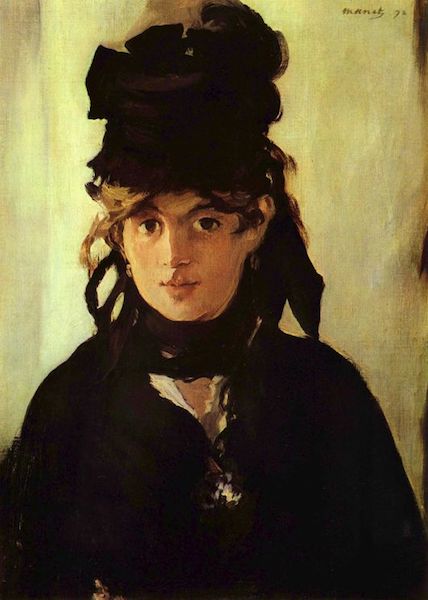“MADAME CEZANNE”
One of the fascinations of the prime work of Paul Cezanne is how he builds his compositions by a process of minute discovery. A new book, Cezanne Portraits by John Elderfield, is full of wonderful examples. “Madame Cezanne” is one.
It’s instructive to compare Cezanne’s execution with Edouard Manet’s in a work of similar size. Manet goes for the strong hit. The blacks are all pushed very black, the background bright and simple to set off the figure, the face essentially done in three tones: decisive, rich, and strong.


Whereas Cezanne goes in the opposite direction. The result is strong, but not by virtue of a few big decisions. It’s built up of many small-scale explorations. In painting, no brushstroke is ever exactly as intended. You can regard that as an imperfection to be corrected, or as opening, perhaps, some intriguing, unanticipated direction. Cezanne clearly follows the second method. Follow the line of the jaw, chin, and cheek. A rather washy blue shape starts at the ear, then is dropped and then picked up again. It’s strengthened by a thin, darker blue line that passes around the chin, paralleled by another, below. Then a thicker, darker blue line/shape; then, all the way around the face to the eye, a succession of little lines, not tentative but also not bossy, sometimes within the modeling of the cheek and sometimes just outside it. The effect is descriptive, but also painterly to the nines, almost abstract, intricate and fascinating.
Look at any feature – the mouth, the ear, the modeling of the cheek – you find the same process of exploration and discovery and delight, with nothing assumed, nothing taken for granted.
Cezanne was notorious for making his models sit perfectly still through endlessly protracted sittings while he did his thing. You can see why from the result.
“Madame Cezanne” is in the collection of the Philadelphia Museum of Art.
